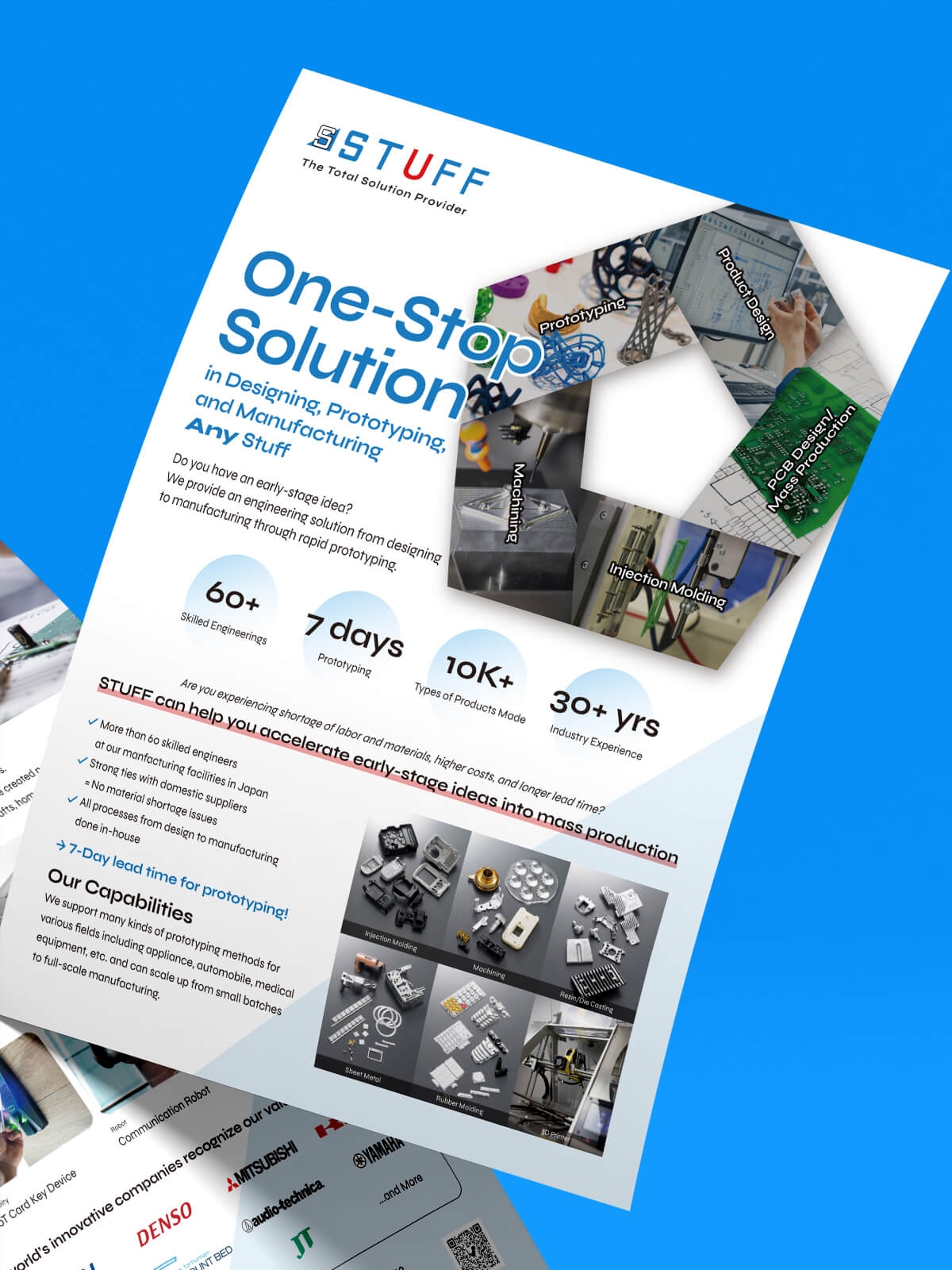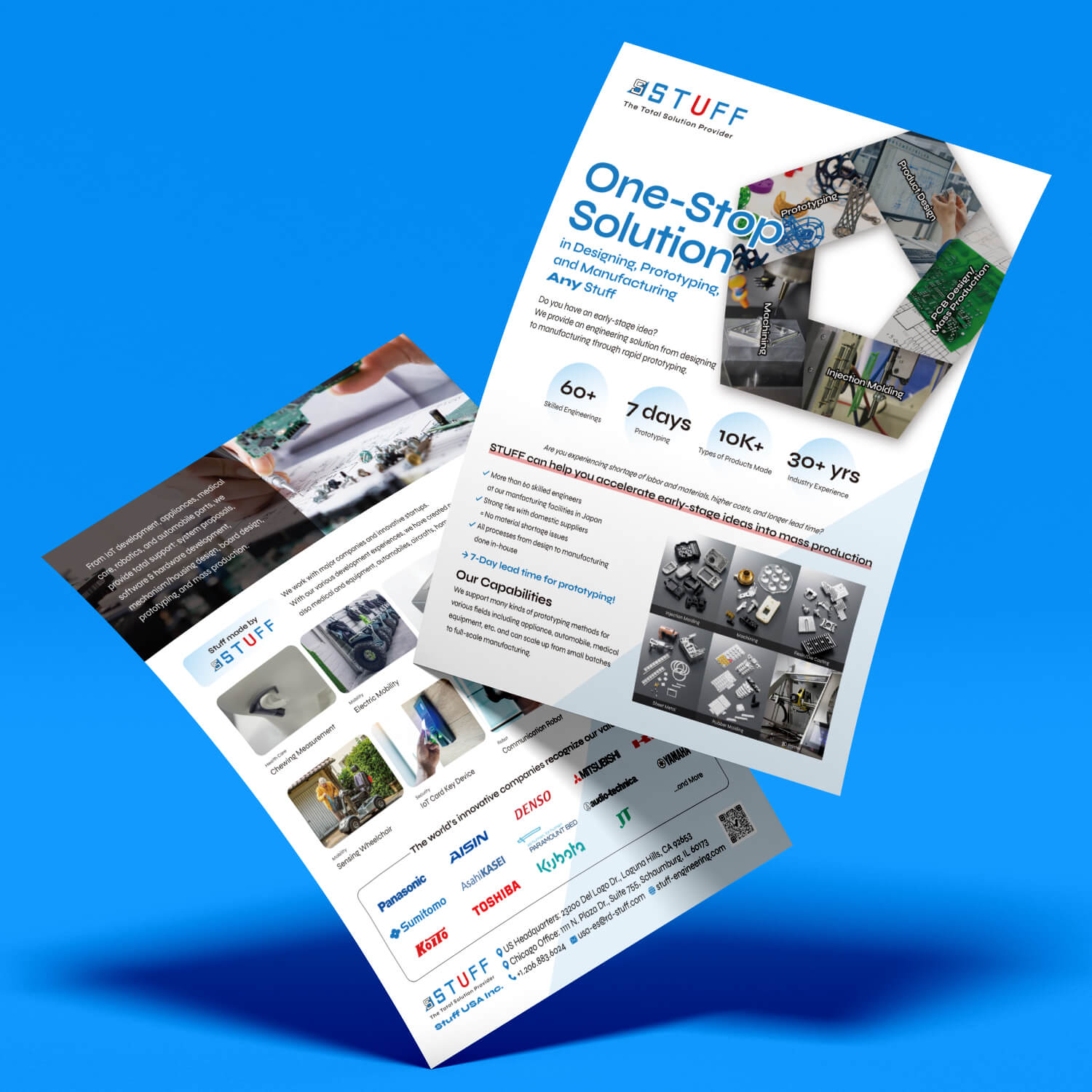April 27, 2024
How Rapid Prototyping Saves You Time & Money
POSTED BY
Team STUFF USA
In the fast-paced world of product development, time and money are precious commodities. That’s where rapid prototyping comes in, a revolutionary approach that empowers businesses to bring their ideas to life quickly and efficiently. This blog delves into the top ten ways rapid prototyping can significantly reduce your development costs and accelerate your time to market.
Top 10 ways how rapid prototyping saves your time and money
1. Early Detection, Early Correction
Rapid prototyping empowers you to create physical or digital representations of your product concept early in the development cycle. This isn’t just about visualization; it’s about unlocking the power of foresight. By having a tangible prototype in hand, you can conduct rigorous testing and gather valuable feedback from various stakeholders, including engineers, designers, and even potential customers. This early feedback loop allows you to identify and address critical design flaws before they snowball into costly problems later in the development process.
Imagine the scenario: you’ve invested significant resources in tooling and materials for full-scale production, only to discover a fundamental design flaw during the initial production run. This can lead to a cascading effect of problems: production delays, expensive reworks, and mountains of wasted materials. These issues can cripple your budget and significantly impact your time to market.
Rapid prototyping acts as a safety net, helping you nip these issues in the bud before they blossom into major roadblocks. By proactively identifying and addressing design flaws early on, you can save significant time and money, ensuring your product development journey is smooth, efficient, and cost-effective.
2. Fostering Collaboration
Gone are the days of information siloes and communication breakdowns. Rapid prototypes act as a universal language, bridging the gap between engineers, designers, and clients. Everyone involved can visualize, interact with, and tangibly discuss the product concept. This shared understanding leads to a more efficient development process, with fewer misunderstandings and misinterpretations.
Additionally, the collaborative environment fostered by rapid prototypes encourages brainstorming and innovation, as ideas can be easily communicated and refined iteratively. Ultimately, this ensures everyone is on the same page from the beginning, preventing costly rework due to miscommunication and fostering a smoother, more successful development journey.
3. Faster to Market, Faster to Profits
Traditional development methods can be slow and cumbersome, delaying your product launch and potentially allowing competitors to gain a foothold in the market. Rapid prototyping, however, allows for iterative design and rapid testing, significantly reducing your time to market. Launching your product sooner gives you a crucial first-mover advantage, allowing you to capture market share and maximize your potential profits.
4. Streamlining Manufacturing
Don’t let unforeseen manufacturing challenges derail your production timeline and budget. By using prototypes for upfront testing, you can identify potential manufacturing issues before full-scale production begins. Imagine discovering a design flaw that makes your product impossible to manufacture efficiently – prototyping helps you avoid these costly production delays and material waste, ensuring a smooth and efficient manufacturing process.
5. Informed Decisions, Empowered Teams
Rapid prototypes are more than just physical models; they are valuable sources of data and insights. By testing and refining your prototypes, you gain crucial information to guide your decision-making throughout the development process. This reduces the risk of making costly mistakes based on assumptions or incomplete information, allowing your team to make informed decisions with confidence.
6. User-Centric Design
In today’s customer-centric market, understanding and meeting user needs is paramount. Rapid prototyping allows for early user testing and feedback on both the functionality and usability of your product. By incorporating user feedback early on, you can iterate and refine your design, ensuring your product truly resonates with your target audience. This user-centric approach translates to a more successful and marketable product in the long run.
7. Cost-Effective Exploration
Traditional design exploration can be a time-consuming and expensive process. Rapid prototyping offers a cost-effective solution, allowing you to explore various design concepts quickly and cheaply. This enables you to experiment with different ideas, identify the most promising design option, and refine it before investing significant resources in full-scale production.
8. Mitigating Risk, and Maximizing Success
By testing and refining your prototypes, you can identify potential product failures before they occur during full-scale production. This proactive approach significantly reduces the risk of product failure, which can have devastating financial and reputational consequences. Rapid prototyping helps you catch and address issues early on, ensuring your product is well-designed and ready for market success.
9. Building Quality, Building Trust
Rapid prototyping is an iterative process, allowing for continuous improvement and refinement of your product design. This means you can identify and address any performance or user experience issues early on, resulting in a higher quality product with a higher chance of success in the market. By delivering a superior product, you build trust with your customers and establish a reputation for excellence.
10. Enhancing Customer Satisfaction
User feedback from prototypes is invaluable. By incorporating this feedback into your design process, you can create a product that truly meets customer needs and exceeds expectations. This user-centric approach leads to increased customer satisfaction and brand loyalty, fostering a strong foundation for long-term success.
Conclusion
Rapid prototyping is not just a technology; it’s a strategic approach that empowers businesses to save time, reduce costs, and bring innovative products to market faster. By leveraging the insights presented in this blog, you can unlock the full potential of rapid prototyping and transform your product development process. With its ability to foster informed decision-making, optimize manufacturing processes, and deliver a superior product experience, rapid prototyping is an essential tool for any business looking to gain a competitive edge in today’s dynamic market.

